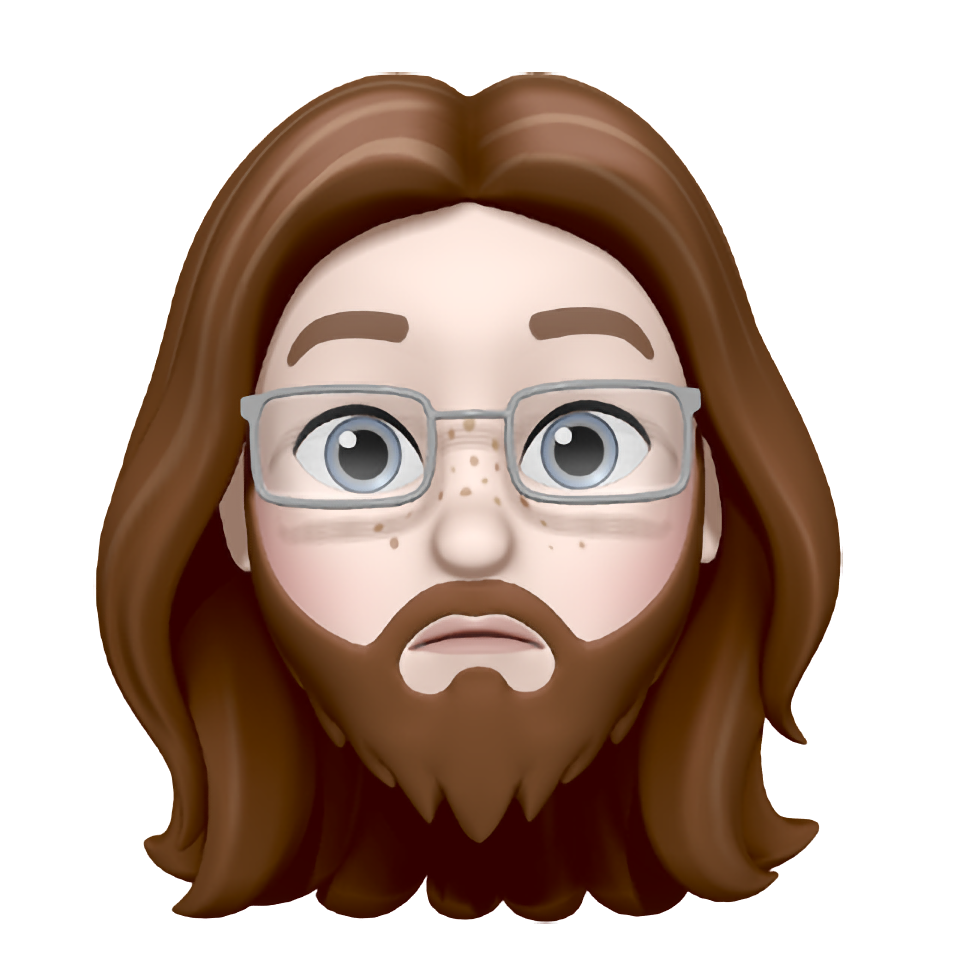Background: 15 years of experience in software and apparently spoiled because it was already set up correctly.
Been practicing doing my own servers, published a test site and 24 hours later, root was compromised.
Rolled back to the backup before I made it public and now I have a security checklist.
Although disabling the root user is a good part of security, leaving it enabled should not alone cause you to get compromised. If it did, you were either running a very old version of OpenSSH with a known flaw, or, your chosen root password was very simple.
The latter. It was autogenerated by the VPS hosting service and I didn’t think about it.
It should be a serious red flag that your VPS host is generating root passwords simple enough to get quickly hacked.
I’m pretty sure they assumed if you bought their service, you have the competency to properly set it up.
And I proved them wrong.
It should be a red flag if the root account has a password at all. Shouldn’t be able to access it without sudo (or in extreme cases, after a single-user boot).
Also, I thought SSH root login was disabled by default. Has been in all Debian and RedHat variants I’ve ever used…
If you install Debian yourself, it asks you to set a root password. If you don’t provide one, it disables root and enables sudo.
Of course, if you’re running Debian provided by a cloud provider, it’s however they set it up for you.
Lol you can actually demo a github compromise in real time to an audience.
Make a repo with an API key, publish it, and literally just watch as it takes only a few minutes before a script logs in.
I search commits for “removed env file” to hopefully catch people who don’t know how git works.
You gremlin lmao
–verbose please?
edit: never mind, found it. So there’s dumbasses storing sensitive data (keys!) inside their git folder and unable to configure .gitignore…
My work is transferring to github from svn currently
My condolences
 yeah, I just tried it there, people actually did it.
yeah, I just tried it there, people actually did it.I always start with .gitignore and adding the .env then making it.
Anywho, there’s git filter-repo which is quite nice and retconned some of my repos for some minor things out of existence :P
I searched for “added gitignore” and I found an etherum wallet with 25 cent.
deleted by creator
echo gecko
One time, I didn’t realize I had allowed all users to log in via ssh, and I had a user “steam” whose password was just “steam”.
“Hey, why is this Valheim server running like shit?”
“Wtf is
xrx?”“Oh, it looks like it’s mining crypto. Cool. Welp, gotta nuke this whole box now.”
So anyway, now I use NixOS.
Good point about a default deny approach to users and ssh, so random services don’t add insecure logins.
This is like browsing /c/selfhosted as everyone portforwards every experimental piece of garbage across their router…
hey, thats me!
Yeah the only thing forwarded past my router is my VPN. Assuming I did my job decently, without a valid private key it should be pretty difficult to compromise.
Meh. Each service in its isolated VM and subnet. Plus just generally a good firewall setup. Currently hosting ~10 services plubicly, never had any issue.
Well, if you actually do that, bully for you, that’s how that should be done if you have to expose services.
Everyone else there is probably DMZing their desktop from what I can tell.
portforwards every experimental piece of garbage across their router…
Man some of those “It’s so E-Z bro” YouTubers are WAY too cavalier about doing this.
At least you had a backup
I’ve been quite stupid with this but never really had issues. Ever since I changed the open ssh port from 22 to something else, my server is basically ignored by botnets. These days I obviously also have some other tricks like fail2ban, but it was funny how effective that was.
We’re not really supposed to expose the ssh port to the internet at all. Better to hide it behind a vpn.
But it’s too damn convenient for so many use cases. Fuck it. Fail2Ban works fine.
You can also set up an ssh tarpit on port 22, which will tie up the bot’s resources and get them stuck in a loop for a while. But I didn’t think it was worth attracting extra attention from the bot admins to satisfy my pettiness.
Almost the same here. I also change some ssh settings: disable root login, disable password, allow only public key login. That’s about it. I never had any problems.
Yeah, about this; any ssh server that can be run as user and doesn’t do shenanigans like switching user?
Interesting. Do you know how it got compromised?
I published it to the internet and the next day, I couldn’t ssh into the server anymore with my user account and something was off.
Tried root + password, also failed.
Immediately facepalmed because the password was the generic 8 characters and there was no fail2ban to stop guessing.
Any idea what ip addresses were used to compromise it?
because the password was the generic 8 characters and there was no fail2ban to stop guessing
Oof yea that’ll do it, your usually fine as long as you hardened enough to at least ward off the script kiddies. The people with actual real skill tend to go after…juicer targets lmao
Haha I’m pretty sure my little server was just part of the “let’s test our dumb script to see if it works. Oh wow it did what a moron!”
Lessons learned.
wow crazy that this was the default setup. It should really force you to either disable root or set a proper password (or warn you)
Now that you mentioned it, it didn’t! I recall even docker Linux setups would yell at me.
Love Hetzner. You just give them your public key and they boot you into a rescue system from which you can install what you want how you want.
I think their auction servers are a hidden gem. I mean the prices used to be better. Now they have some kind of systrem that resets them when they get too low. But the prices are still pretty good I think. But a year or two ago I got a pretty good deal on two decently spec’d servers.
People are scared off by the fact you just get their rescue prompt on auctions boxes… Except their rescue prompt has a guided imaging setup tool to install pretty much every popular distro with configurable raid options etc.
Yeah, I basically jump from auction system to auction system every other year or so and either get a cheaper or more powerful server or both.
I monitor for good deals. Because there’s no contract it’s easy to add one, move stuff over at your leisure and kill the old one off. It’s the better way to do it for semi serious stuff.
Most distributions disable root by default
Which ones? I’m asking because that isn’t true for cent, rocky, arch.
we’re probably talking about different things. virtually no distribution comes with root access with a password. you have to explicitly give the root user a password. without a password no amount of brute force sshing root will work. I’m not saying the root user is entirely disabled. so either the service OP is building on is basically a goldmine for compromised machines or OP literally shot themselves in the root by giving root a password manually. something you should never do.
Many cloud providers (the cheap ones in particular) will put patches on top of the base distro, so sometimes root always gets a password. Even for Ubuntu.
There are ways around this, like proper cloud-init support, but not exactly beginner friendly.
#no thank you lol
Yeah I was confused about the comment chain. I was thinking terminal login vs ssh. You’re right in my experience…root ssh requires user intervention for RHEL and friends and arch and debian.
Side note: did you mean to say “shot themselves in the root”? I love it either way.
Mostly Ubuntu. And… I think it’s just Ubuntu.
Fedora (immutable at least) has it disabled by default I think, but it’s just one checkbox away in one of the setup menus.
Standard Fedora does as well
Ah fair enough, I know that’s the basis of a ton of distros. I lean towards RHEL so I’m not super fluent there.
Rocky asks during setup, I assume centOS too
Don’t use passwords for ssh. Use keys and disable password authentication.
More importantly, don’t open up SSH to public access. Use a VPN connection to the server. This is really easy to do with Netbird, Tailscale, etc. You should only ever be able to connect to SSH privately, never over the public net.
It’s perfectly safe to run SSH on port 22 towards the open Internet with public key authentication only.
https://nvd.nist.gov/vuln/detail/cve-2024-6409 RCE as root without authentication via Open SSH. If they’ve got a connection, that’s more than nothing and sometimes it’s enough.
That attack vector is exactly the same towards a VPN.
A VPN like Wireguard can run over UDP on a random port which is nearly impossible to discover for an attacker. Unlike sshd, it won’t even show up in a portscan.
This was a specific design goal of Wireguard by the way (see “5.1 Silence is a virtue” here https://www.wireguard.com/papers/wireguard.pdf)
It also acts as a catch-all for all your services, so instead of worrying about the security of all the different sshds or other services you may have exposed, you just have to keep your vpn up to date.
Are you talking a VPN running on the same box as the service? UDP VPN would help as another mentioned, but doesn’t really add isolation.
If your vpn box is standalone, then getting root is bad but just step one. They have to own the VPN to be able to even do more recon then try SSH.
Defense in depth. They didn’t immediately get server root and application access in one step. Now they have to connect to a patched, cert only, etc SSH server. Just looking for it could trip into some honeypot. They had to find the VPN host as well which wasn’t the same as the box they were targeting. That would shut down 99% of the automated/script kiddie shit finding the main service then scanning that IP.
You can’t argue that one step to own the system is more secure than two separate pieces of updated software on separate boxes.
Tailscale? Netbird? I have been using hamachi like a fucking neanderthal. I love this posts, I learn so much
what’s netbird
https://netbird.io. Wireguard based software defined networking, very similar to Tailscale.
Ah, timeless classic.
Which distro allows root to login via SSH?
Not very many. None of the enterprise ones, at least.
All of them if you configure it?
I ran a standard raspian ssh server on my home network for several years, default user was removed and my own user was in it’s place, root was configured as standard on a raspbian, my account had a complex but fairly short password, no specific keys set.
I saw constant attacks but to my knowledge, it was never breached.
I removed it when I realized that my ISP might take a dim view of running a server on their home client net that they didn’t know about, especially since it showed up on Shodan…
Don’t do what I did, secure your systems properly!
But it was kinda cool to be able to SSH from Thailand back home to Sweden and browse my NAS, it was super slow, but damn cool…
But it was kinda cool to be able to SSH from Thailand back home to Sweden and browse my NAS, it was super slow, but damn cool…
That feels like sorcery, doesn’t it? You can still do this WAY safer by using Wireguard or something a little easier like Tailscale. I use Tailscale myself to VPN to my NAS.
I get a kick out of showing people my NextCloud Memories albums or Jellyfin videos from my phone and saying “This is talking to the box in my house right now! Isn’t that cool!?” Hahaha.
I’m almost glad I had to go that route. Most of our ISPs here in the U.S will block outgoing ports by default, so they can
keep the network safesell you a home business plan lol.Why would a Swedish ISP care? I’ve run servers from home since I first connected up in … 1996. I’ve had a lot of different ISPs during that time, although nowadays I always choose Bahnhof because of them fighting the good fights.
They probably don’t, unless I got compromised and bad traffic came from their network, but I was paranoid, and wanted to avoid the possibility.
Lol ssh has no reason to be port exposed in 99% of home server setups.
VPNs are extremely easy, free, and wireguard is very performant with openvpn also fine for ssh. I have yet to see any usecase for simply port forwarding ssh in a home setup. Even a public git server can be tunneled through https.
Yeah I’m honest with myself that I’m a security newb and don’t know how to even know what I’m vulnerable to yet. So I didn’t bother opening anything at all on my router. That sounded way too scary.
Tailscale really is magic. I just use Cloudflare to forward a domain I own, and I can get to my services, my NextCloud, everything, from anywhere, and I’m reasonably confident I’m not exposing any doors to the innumerable botnet swarms.
It might be a tiny bit inconvenient if I wanted to serve anything to anyone not in my Tailnet or already on my home LAN (like sending al someone a link to a NextCloud folder for instance.), but at this point, that’s quite the edge case.
I learned to set up NGINX proxy manager for a reverse proxy though, and that’s pretty great! I still harden stuff where I can as I learn, even though I’m confident nobody’s even seeing it.
Honestly, crowdsec with the nginx bouncer is all you need security-wise to start experimenting. It isn’t perfect security, but it is way more comprehensive than fail2ban for just getting started and figuring more out later.
Here is my traefik-based crowdsec docker composer:
services: crowdsec: image: crowdsecurity/crowdsec:latest container_name: crowdsec environment: GID: $PGID volumes: - $USERDIR/dockerconfig/crowdsec/acquis.yaml:/etc/crowdsec/acquis.yaml - $USERDIR/data/Volumes/crowdsec:/var/lib/crowdsec/data/ - $USERDIR/dockerconfig/crowdsec:/etc/crowdsec/ - $DOCKERDIR/traefik2/traefik.log:/var/log/traefik/traefik.log:ro networks: - web restart: unless-stopped bouncer-traefik: image: docker.io/fbonalair/traefik-crowdsec-bouncer:latest container_name: bouncer-traefik environment: CROWDSEC_BOUNCER_API_KEY: $CROWDSEC_API CROWDSEC_AGENT_HOST: crowdsec:8080 networks: - web # same network as traefik + crowdsec depends_on: - crowdsec restart: unless-stopped networks: web: external: truehttps://github.com/imthenachoman/How-To-Secure-A-Linux-Server this is a more in-depth crash course for system-level security but hasn’t been updated in a while.
That’s rad! Thanks so much for sharing that! Definitely gonna give this a read. Very much appreciated. :)
Use gnome powder to shrink, go behind the counter, kick his ass and get your money back.
Good on you learning new skills.
This is why other sysadmins and cybetsecurity exist. Be nice to them.
I like to spin up a public facing server and run tcpdump
Lol! Honeypot or just bored?
Actually I was troubleshooting a Firewall issue on site. I just forgot to use the filter arguments to reduce the output.
Oooof, I know that feeling.
I’m having the opposite problem right now. Tightend a VM down so hard that now I can’t get into it.
Permitting inbound SSH attempts, but disallowing actual logins, is an effective strategy to identify compromised hosts in real-time.
The origin address of any login attempt is betraying it shouldn’t be trusted, and be fed into tarpits and block lists.
If it is your single purpose to create a blocklist of suspect IP addresses, I guess this could be a honeypot strategy.
If it’s to secure your own servers, you’re only playing whack-a-mole using this method. For every IP you block, ten more will pop up.
Instead of blacklisting, it’s better to whitelist the IP addresses or ranges that have a legitimate reason to connect to your server, or alternatively use someting like geoip firewall rules to limit the scope of your exposure.
Endlessh and fail2ban are great to setup a ssh honeypot. There even is a Prometheus exporter version for some nice stats
Just expose endlessh on your public port 22 and if needed, configure your actual ssh on a different port. But generally: avoid exposing ssh if you don’t actually need it or at least disable root login and disable password authentication completely.
https://github.com/skeeto/endlessh https://github.com/shizunge/endlessh-go https://github.com/itskenny0/fail2ban-endlessh
I disabled ssh on IPv4 and that reduced hacking attempts by 99%.
It’s on IPv6 port 22 with a DNS pointing to it. I can log into it remotely by hostname. Easy.
Since I’ve switched to using SSH keys for all auth Ive had no problems I’m aware of. Plus I don’t need to remember a bunch of passwords.
But then I’ve had no training in this area. What do I know
I’ve recently seen login attempts using keys, found it curious…
Probably still looking for hosts that have weak Debian SSH keys that users forgot to replace. https://www.hezmatt.org/~mpalmer/blog/2024/04/09/how-i-tripped-over-the-debian-weak-keys-vuln.html


















